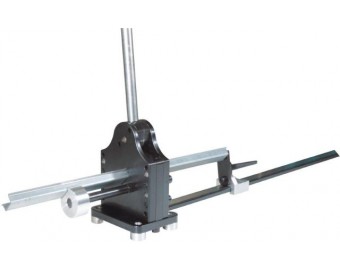jtashaffer
Member
Anyone got a cheap way for cutting din rail besides chop saws, band sawa or a hack saw
Anyone got a cheap way for cutting din rail besides chop saws, band sawa or a hack saw

We have one similar to this, if you build control cabinets you can't live without a DIN rail cutter ( ? )

I agree, this tool is awesome! I have a Phoenix Contact model that we found on Ebay.....luckily. They are very pricy!
Dave
I seem to run into some issues where I need to knockout a hole to add a a connection, but the Panduit filled with wires is about an inch away from the side of the panel, so I need to stick a board in there to make sure the drill doesn't hit the wires. Maybe punch out a dozen spare holes and put fills in? I remember someone mentioning labeling the Panduit covers at each corner, so they could be easily put back on. I thought that was a good idea. Also, what's the trick to pulling Panduit covers off/on. Sometimes I need to fight with them. I think I'm missing a simple procedure. Any hints?
Multi-function din rail cutterAnyone got a cheap way for cutting din rail besides chop saws, band sawa or a hack saw
Anyone got a cheap way for cutting din rail besides chop saws, band sawa or a hack saw
It would be nice but I don't need 500 sticks of din rail. I doubt my employer would go for that.
"I will use self drillers for panduit, sometimes for din rail...." The next time you do that, remove the panduit and or din rail and look at the metal shavings trapped between the panduit or din rail and the back plate.
I layout all of the components, mark the mounting holes, remove the components, drill and tap the mounting holes, CLEAN the back plate (including the layout and mounting hole marks) and then mount the components.
Somewhat OCD but it does make for a nice product!
